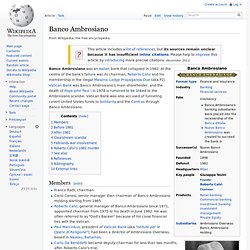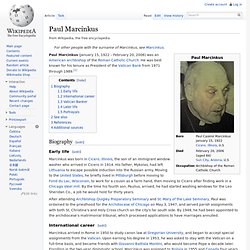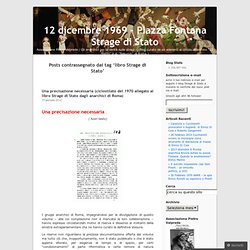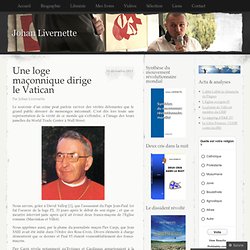

Years of Lead (Italy) Red Brigades. Models for the Red Brigades included the Latin American urban guerrilla movements.

Volumes on the Tupamaros published by Feltrinelli were influential", a sort of do-it-yourself manual for the early Red Brigades" and also the Italian partisan movement of 1943–45 which was interpreted as an example of a youthful minority using violent means for just ends.[2] The group's most infamous act took place in 1978, when the second groups of the BR, headed by Mario Moretti, kidnapped the former Christian Democrat Prime Minister Aldo Moro, who was trying to reach a compromesso storico, or "historic compromise", with the Communists.[1] The kidnappers killed five members of Moro's entourage, and murdered Moro himself 54 days later. The BR barely survived the end years of the Cold War following a split in 1984 and the arrest or flight of the majority of its members. 1970: the first BR generation[edit] 1974 arrest of BR founders[edit] Expansion and radicalization[edit] The BR in the 1980s[edit]
The 1970s: Strategy of tension and Years of lead. Banco Ambrosiano. Members[edit] Roberto Calvi.

Franco Ratti, chairman.Carlo Canesi, senior manager then chairman of Banco Ambrosiano Holding starting from 1965.Roberto Calvi, general manager of Banco Ambrosiano since 1971, appointed chairman from 1975 to his death in June 1982. He was often referred to as "God's Banker" because of his close financial ties with the Vatican.Paul Marcinkus, president of Vatican Bank (aka "Istituto per le Opere di Religione"), had been a director of Ambrosiano Overseas, based in Nassau, Bahamas.Carlo De Benedetti became deputy-chairman for less than two months, after Roberto Calvi's trial.Nuovo Banco Ambrosiano is under Giovanni Bazoli.Carlos Guido Natal Coda, head of the Argentine branch of Banco Ambrosiano (Coda was the predecessor of Emilio Massera as Commander-in-Chief of the Argentine Navy).[1] Before 1981[edit] Calvi used his complex network of overseas banks and companies to move money out of Italy, to inflate share prices, and to secure massive unsecured loans.
Paul Marcinkus. Paul Marcinkus (January 15, 1922 – February 20, 2006) was an American archbishop of the Roman Catholic Church.

He was best known for his tenure as President of the Vatican Bank from 1971 through 1989.[1] Biography[edit] Early life[edit] Marcinkus was born in Cicero, Illinois, the son of an immigrant window washer who arrived in Cicero in 1914. His father, Mykolas, had left Lithuania to escape possible induction into the Russian army. After attending Archbishop Quigley Preparatory Seminary and St. International career[edit] Marcinkus arrived in Rome in 1950 to study canon law at Gregorian University, and began to accept special assignments from the Vatican. In December 1959, he returned to Rome to work in the office of the secretariat of state, by which time he had learned enough Italian to serve as an occasional interpreter for Pope John XXIII.
On September 26, 1981, Marcinkus was appointed Pro-President of Vatican City. He resigned his position on October 30, 1990. Associazione Pietro Valpreda / Gli anarchici per la verità sulle stragi – (Blog curato da ex aderenti al circolo anarchico "22 Marzo" e al "Bakunin" di Roma.) 12 dicembre 1969 - Piazza Fontana Strage di Stato. ( fuori testo) I gruppi anarchici di Roma, impegnandosi per la divulgazione di questo volume – alla cui compilazione non è mancata la loro collaborazione – hanno espresso circostanziati motivi di riserva e dissenso ai militanti della sinistra extraparlamentare che ne hanno curato la definitiva stesura.

Le riserve non riguardano la preziosa documentazione offerta dal volume ma tutto ciò che, inopportunamente, non è stato pubblicato o che è stato appena sfiorato, per esigenze di tempo e di spazio, per certi “condizionamenti” di parte riformistica e certe remore di natura prudenziale, che sarebbe stato bene disattendere. Une loge maçonnique dirige le Vatican. Le souvenir d’un crime peut parfois raviver des vérités détonantes que le grand public abreuvé de mensonges méconnaît.

C’est dès lors toute une représentation de la vérité de ce monde qui s’effondre, à l’image des tours jumelles du World Trade Center à Wall Street. Nous savons, grâce à David Yallop [1], que l’assassinat du Pape Jean-Paul 1er fut l’oeuvre de la loge P2, 33 jours après le début de son règne ; et que ce meurtre intervint juste après qu’il ait évincé deux francs-maçons de l’Eglise romaine (Marcinkus et Villot). Nous apprîmes aussi, par la plume du journaliste maçon Pier Carpi, que Jean XXIII avait été initié dans l’Ordre des Rose-Croix. Divers éléments à charge démontrent que ce dernier et Paul VI étaient vraisemblablement des francs-maçons.
Pier Carpi révéla notamment qu’Evêques et Cardinaux appartenaient à la loge P2 : « On l’appelle la loge ecclésiastique et elle est en contact direct avec le grand maître de la loge unie d’Angleterre, le duc Michael de Kent.